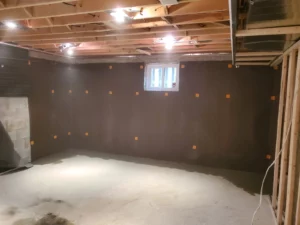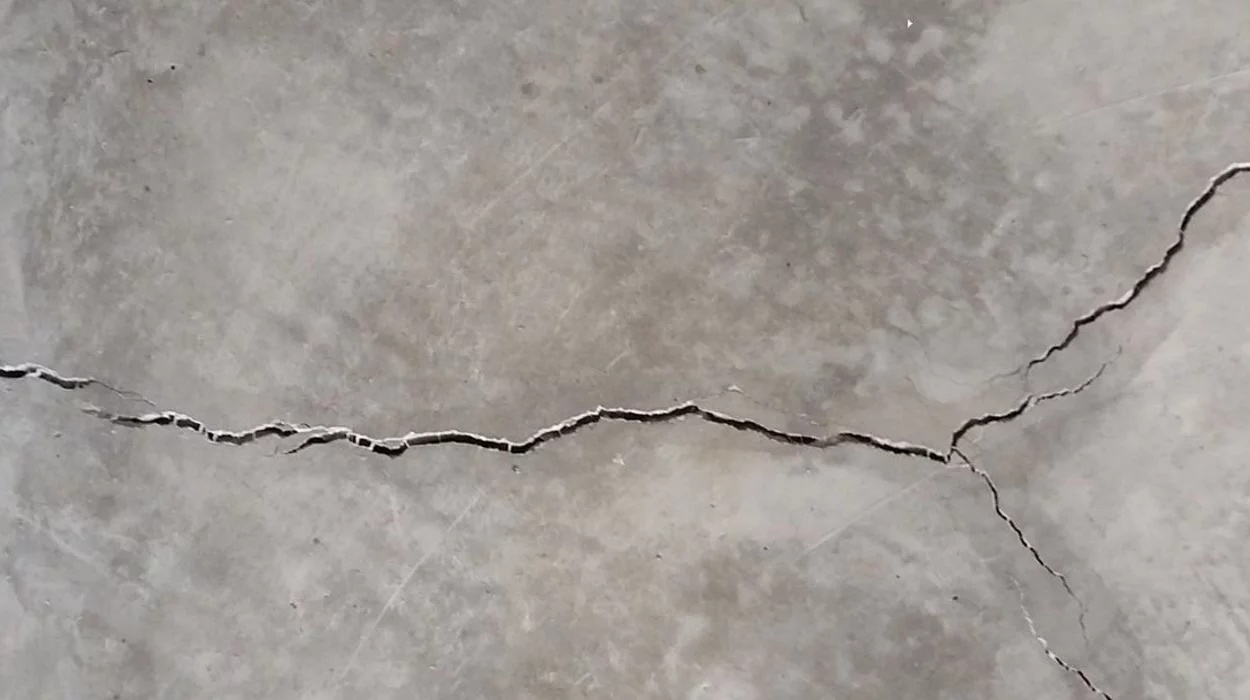Inside Waterproofing Membrane Installation
 An inside waterproofing membrane installation involves installing a waterproof membrane on the interior of your foundation walls. This membrane is designed to prevent water from entering your basement or crawl space by directing it to a drainage system, such as a sump pump. There are several advantages to choosing an inside waterproofing membrane installation, including:
An inside waterproofing membrane installation involves installing a waterproof membrane on the interior of your foundation walls. This membrane is designed to prevent water from entering your basement or crawl space by directing it to a drainage system, such as a sump pump. There are several advantages to choosing an inside waterproofing membrane installation, including:
Cost-effectiveness: An inside waterproofing membrane installation is typically less expensive than an outside installation, as it does not require excavation.
Convenience: Because an inside installation can be completed from the inside of your home, there is no need to disrupt your landscaping or hardscaping.
Accessibility: An inside installation allows easy access to the waterproofing system, making it easier to maintain and repair.
However, there are also some disadvantages to choosing an inside waterproofing membrane installation, including:
Limited protection: While an inside waterproofing membrane can be effective in preventing water from entering your basement or crawl space, it does not address the root cause of the problem, which is usually external water pressure.
Decreased living space: An inside installation will reduce the usable living space in your basement, as the membrane will need to be installed along the walls.
Odour issues: Because an inside installation involves sealing the walls, it can sometimes result in a musty odor, especially if the basement has a pre-existing mold or mildew problem.
Outside Waterproofing Membrane Installation
 An outside waterproofing membrane installation involves excavating the exterior of your foundation walls, applying a waterproof membrane to the outside, and installing drainage pipes that direct water away from your foundation. There are several advantages to choosing an outside waterproofing membrane installation, including:
An outside waterproofing membrane installation involves excavating the exterior of your foundation walls, applying a waterproof membrane to the outside, and installing drainage pipes that direct water away from your foundation. There are several advantages to choosing an outside waterproofing membrane installation, including:
Maximum protection: An outside waterproofing membrane installation addresses the root cause of your water problem by preventing water from accumulating around your foundation walls. It provides maximum protection against water damage.
Increased home value: An outside installation can increase the value of your home, as it is a long-term investment in the health of your property.
More living space: An outside installation does not take up any living space, as it is installed on the exterior of your home.
However, there are also some disadvantages to choosing an outside waterproofing membrane installation, including:
Cost: An outside installation is typically more expensive than an inside installation, as it involves excavation and landscaping work.
Disruption: An outside installation will require excavation work, which can be disruptive to your landscaping and hardscaping.
Maintenance: While an outside installation is designed to last for many years, it may require maintenance in the future, such as cleaning the drainage pipes or replacing damaged membranes.
Conclusion
Choosing between an inside or outside waterproofing membrane installation is a decision that should not be taken lightly. While both options have their advantages and disadvantages, the best choice for your property will depend on a variety of factors, including the severity of your water problem, your budget, and your long-term goals for your property. If you are still unsure about which option is right for you, it is recommended that you consult with a professional waterproofing contractor, who can evaluate your property and recommend the best course of action.



